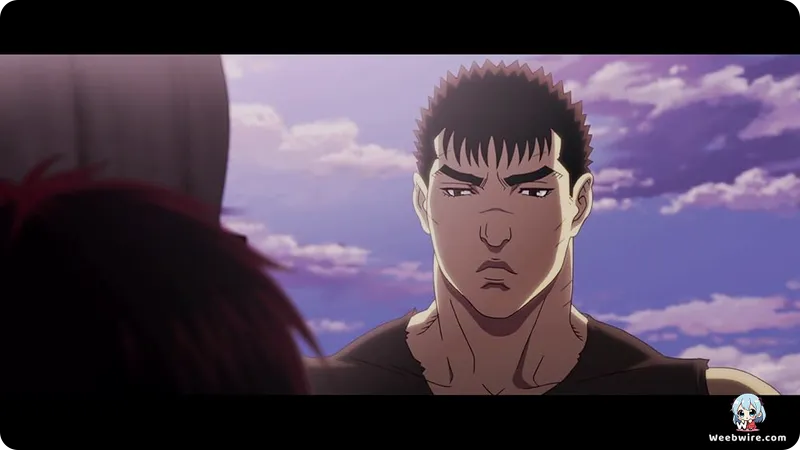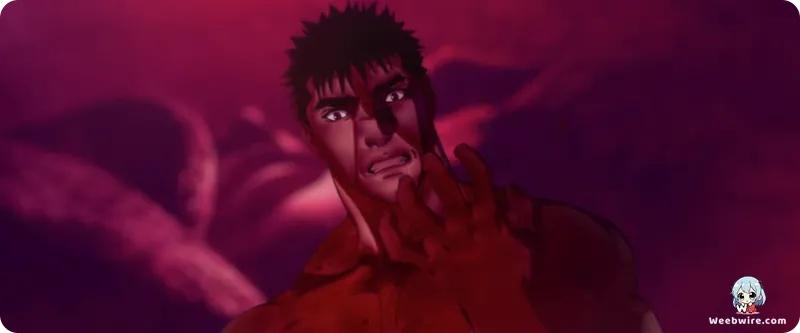Berserk: The Golden Age Arc III - The Advent: Unflinching Horror and Enduring Legacy

In the esteemed pantheon of dark fantasy anime, few sagas resonate with the chilling power and profound impact of Berserk. The Golden Age Arc trilogy stands as a monumental cinematic achievement, culminating in its final, unforgettable installment, Berserk: The Golden Age Arc III - The Advent. This film has indelibly etched itself into animation history as one of the most relentlessly bleak and emotionally devastating features ever produced. Unlike many animated works that strive for heroic crescendos or heartwarming conclusions, The Advent plunges its audience into an existential abyss, delivering a narrative so unflinching in its portrayal of horror that it continues to fuel intense debate and scholarly analysis among its dedicated fanbase and critics alike.
The Unflinching Adaptation of the Eclipse
The enduring legacy of The Advent is inextricably linked to its faithful, albeit harrowing, adaptation of the manga’s infamous 'Eclipse' sequence. This isn't merely a plot point; it's the cataclysmic nexus that irrevocably reshapes the destinies of every character, particularly the tormented Guts and the resilient Casca. For years, manga enthusiasts simultaneously anticipated and dreaded its cinematic realization, fully aware of the sheer brutality and psychological torment that defined this pivotal event.

Studio 4°C, the animation powerhouse behind the trilogy, bravely undertook the formidable challenge of translating Kentaro Miura's grotesque yet intricate artistry to the screen. Their innovative approach, a masterful fusion of traditional 2D animation with meticulously integrated CGI, allowed for the depiction of the sprawling, chaotic scenes of the Eclipse with an unprecedented scale and fluid dynamism. The true triumph lies in their unwavering commitment to capturing the raw, visceral emotion and horrifying despair, refusing to shy away from the manga’s explicit content a testament to their dedication to the source material’s uncompromising vision.
A Symphony of Despair: Atmosphere and Sound
Beyond its visual spectacle, The Advent excels in its masterful command of atmosphere and thematic depth. Far from being a mere showcase of gore, the film serves as a profound meditation on betrayal, the ultimate sacrifice, the corrupting influence of unchecked ambition, and the relentless struggle against an indifferent, malevolent fate. The narrative artfully builds a false sense of security and fleeting hope for the Band of the Hawk, only to shatter it with unimaginable brutality. This deliberate pacing amplifies the emotional devastation, forcing the audience to bear witness to the crushing weight of every character's choices and their horrific consequences. The psychological toll on Guts and Casca is depicted with agonizing realism, transforming them from valiant warriors into broken, scarred survivors.
The auditory landscape of The Advent is as vital to its impact as its visual prowess. Shiro Sagisu’s haunting musical score acts as a character in itself, weaving a chilling tapestry of dread, despair, and tragic beauty. Iconic tracks like 'Blood and Guts' and the chilling 'The Brand' amplify the film’s terrifying atmosphere, heightening the sense of impending doom and the visceral nature of the unfolding events. The sound design is meticulously crafted, from the guttural roars of the Apostles to the agonizing screams of the victims, immersing the viewer fully into the nightmare. Coupled with the powerful performances of the voice actors, who convey extreme emotions of fear, pain, and ultimate despair, the film achieves a level of intensity rarely seen in animated features. The Japanese voice cast, in particular, delivered performances that resonate deeply, perfectly embodying the characters' descent into madness and agony.
Fidelity to a Master's Vision
Kentaro Miura’s original manga is celebrated for its intricate world-building, complex characters, and profound philosophical undertones, all of which The Advent respectfully translates to the screen. Miura himself was renowned for his meticulous attention to detail and his uncompromising artistic vision, often dedicating years to perfecting a single arc. The film’s unwavering fidelity to this vision, even in its most disturbing aspects, is a significant draw for long-time fans and offers a fascinating insight for newcomers. It stands as a rare instance where an adaptation commits so fully to the bleakness of its source, rather than softening its edges for a broader audience, thereby solidifying its place as a definitive animated rendition of the Golden Age Arc.
A Lasting Legacy
Upon its release, Berserk: The Golden Age Arc III - The Advent cemented its place in anime history. Despite its extreme content, it garnered widespread praise for its unflinching portrayal of one of manga’s most notorious sequences, its artistic ambition, and its powerful storytelling. It is a film that leaves an indelible mark on viewers, forcing them to confront the darkest facets of human nature. The enduring discussions surrounding the film, its artistic choices, and its profound emotional impact underscore its status not just as a cult classic, but as a masterclass in dark fantasy animation. It stands as a testament to both Miura's genius and Studio 4°C's courage in bringing such a challenging and pivotal narrative to life on the big screen.
Credits
Berserk: The Golden Age Arc III - The Advent
Author
Kentaro Miura
Cover Art
Kentaro Miura
Studio
Studio 4°C
Publisher
Hakusensha
Producers





